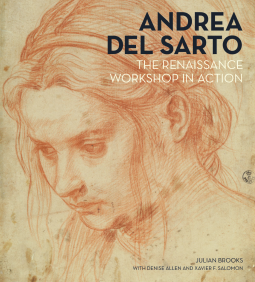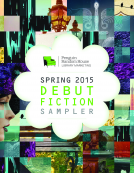
Andrea del Sarto
The Renaissance Workshop in Action
by Julian Brooks
This title was previously available on NetGalley and is now archived.
Send NetGalley books directly to your Kindle or Kindle app
1
To read on a Kindle or Kindle app, please add kindle@netgalley.com as an approved email address to receive files in your Amazon account. Click here for step-by-step instructions.
2
Also find your Kindle email address within your Amazon account, and enter it here.
Pub Date Jun 23 2015 | Archive Date Oct 19 2015
Getty Publications | J. Paul Getty Museum
Description
This lavishly illustrated book reveals del Sarto's dazzling inventiveness and creative process, presenting fifty core drawings on paper together with a handful of paintings. The first publication to look to del Sarto’s working practice through a close examination of his art from across all the world’s major collections, this volume analyzes new studies of his panel underdrawings as well. The depth and breadth of its research make this book an important contribution to the study of del Sarto and Florentine Renaissance workshop practice.
This volume is published to accompany an exhibition on view at the J. Paul Getty Museum from June 23 through September 13, 2015, and at the Frick Collection in New York from October 6, 2015, though January 10, 2016.
Available Editions
| EDITION | Other Format |
| ISBN | 9781606064382 |
| PRICE | $59.00 (USD) |
Average rating from 5 members
Featured Reviews
 Reviewer 153322
Reviewer 153322
Gorgeous, large-format companion to an exhibit at the Getty, which reunited most of the existing Andrea del Sarto works to examine the workings of a profitable and productive Renaissance workshop--from managing clients and their demands, acquiring the colors (including the mango-leaf-eating cow urine gold), training apprentices, drafting in chalk, revision of the paintings via scanning technology, competition with other artists and existing within the complex politics of early 16th century Florence.
 Critter B, Librarian
Critter B, Librarian
Sarto, esteemed by both his peers and the powerful in renaissance-era Italy, is today far lesser known than his contemporaries. This book goes a fair way in changing that through detailed and responsible documentation of his skill supported with the undeniable proof of exquisite examples of his work.
This book would interest art lovers with all levels of knowledge, from those well-studied in Italian Renaissance Art, to those familiar with the more famous masters, and even to those who have been recently introduced to art history.
As a less-informed lover of art, this book was both fascinating, enjoyable and illuminative.





